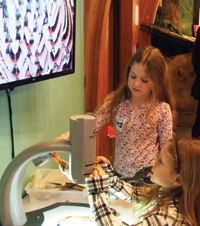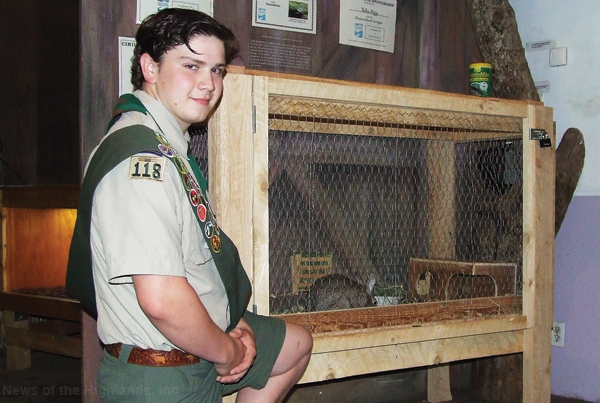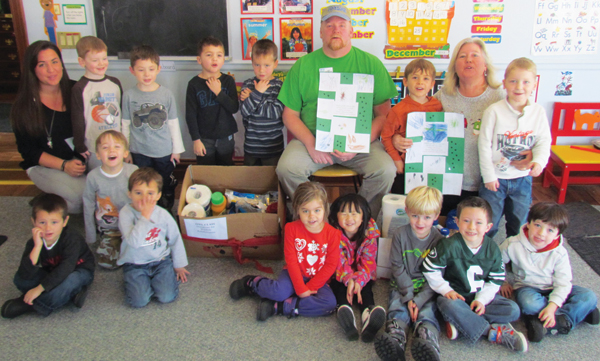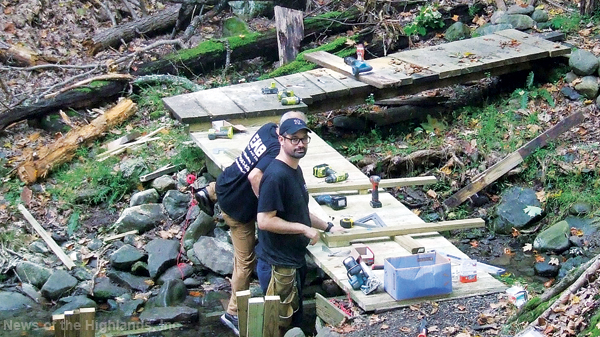
“If you can reach it, you can touch it,” Emily Nestlerode told the crowd at the Wildlife Education Center. They had come on Jan. 28 for the opening of the new Birds on the Wing exhibit — the first Ms. Nestlerode had arranged for the museum. Her goal was to have plenty of things for kids to do.
She spoke at a brief ribbon cutting ceremony, which included board president Susan Christensen and executive director Jackie Grant. Once the ribbon was snipped, adults helped themselves to champagne and cheese, while the kids took Ms. Nestlerode’s advice and looked for things they could touch.
Abigail Baisley and Devon Hard hadn’t met before, but they had no problem working together at a powerful magnifying device. They slid a bird feather into a slot in the machine, and saw the feather greatly enlarged on a screen above them.
A few youngsters took turns at the nest building table. And a few people, who were no longer kids, pushed buttons to hear the warning cries of different species.
One of the things you couldn’t touch was an eagle suspended from the ceiling. Jackie Grant said that to display the bird the museum has to get a permit, which it renews each year.
Another untouchable item was a collection of eggs that had been preserved since the 19th century. The eggs were unreachable because they were enclosed in a glass case.
Ainsley McMillan knelt in front of a bird diagram and stretched out her arms to see how her “wing span” compared with some of the larger creatures in the aviary world.
Ainsley measured five feet from finger tip to finger tip, which is still considerably less than the wing span of a bald eagle, which is normally at least seven feet.
Ainsley and her family live in Wappingers Falls. Since they discovered the museum a few years ago, they have endowed two exhibits through the Dorr Foundation.
John Van Nostrand Dorr (1872-1962) was a chemist and Ainsley’s great-great-great grandfather. Mr. Dorr was responsible for several inventions, but he is best remembered for convincing authorities to paint white lines along the shoulders of highways. The innovation reduced the number of traffic accidents.
Peter McMillan (Ainsley’s father) is a board member of the foundation, which subsidizes ventures in science and education. On Jan. 28, he said that helping the museum produce new exhibits was “money well spent.”
The Birds on the Wing Exhibit will be at the Wildlife Education Center (25 Boulevard in Cornwall-on-Hudson) for two years.



